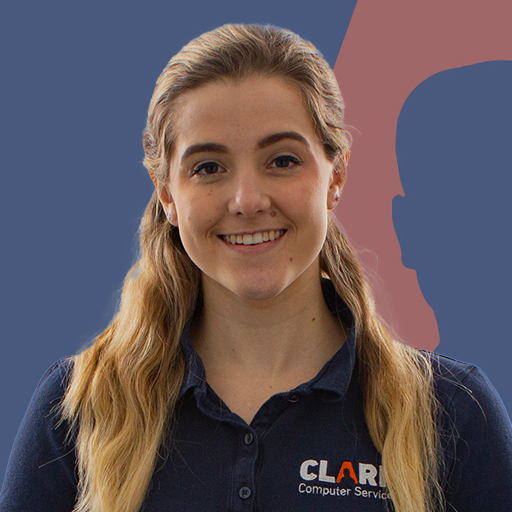what are structured cabling services?
Sydney's seminar
For several years now, Clark Computer Services has offered in-house structured cabling services, making us your one-stop technology partner. However, many people are not familiar with the importance of cabling and how it contributes to speed, reliability, and security. In this blog, we want to answer the question, What is Structured Cabling?
So, in this guide, I’ll provide you with the ins and outs of structured cabling to help you understand how this service can benefit you.
services we offer
Unfortunately, not all data infrastructure is installed utilizing the organized structured cabling services that CLARK offers. Poorly installed cabling can slow down your network and, in the end, cost you money. We can prevent many network problems by installing and managing voice, data, fiber, or copper cabling systems.
That means that we install jacks for computers and phone systems, run lines for security systems, fire alarms, intercoms, and more. In addition, we do cable cleanups, where we take the tangled mess currently in your server room or the trip hazards lurking around your office and make all your cabling more manageable. An organized network will help you save time and money when it’s time to upgrade or add new devices.

the basics of structured cabling
While you surely know that wires are hidden throughout your office and home that deliver electricity to your outlets, you may not know that there are other, separate wires that carry your voice and data communications systems. This separate wiring is known as structured cabling and is also sometimes called low-voltage cabling or telecommunications cabling.
Structure cabling deals with complex cabling that helps support not only data and voice but video, security access, and even energy systems. Each system has standards and regulations defined by ANSI/TIA-568 standards set by the Telecommunications Industry Association. These standards give strict guidelines for the design, management, and operation of data centers, offices, and apartment buildings. Ideally, following these regularly updated standards allow the cabling system to be suitable for both the data needs of today and those in the future.
six subsystems of structured cabling
Per the ANSI/TIA-568 standards, six subsystems make up a structured cabling system. These six components are the entrance facilities, equipment room, backbone cabling, telecommunications room, horizontal cabling, and work area.
The telecommunications rooms are the middleman between Backbone and Horizontal Cabling and should also be environmentally controlled. These rooms are typically a general utility room that hosts patch panels and jumpers/patch cords, connecting to the horizontal cabling for Work Areas, where you access the data connections from a wall outlet.
The Entrance Facility is the demarcation point where the telecom facilities from ISPs or Telephone networks enter a building. The cables will enter a specific room from a conduit, known as the Equipment Room, where other devices, such as connection points, patch panels, equipment racks, and protection devices, will be set up. This room provides connections for the internal cabling and must be climate controlled.
From the equipment room is Backbone Cabling, which is also known as riser or vertical cabling. This cabling is the wiring that connects entrance facilities, Telecommunications Rooms, and equipment rooms and typically is installed vertically to connect from floor to floor. Many different types of wires can be used in this subsystem, such as twisted-pair or optical fiber cabling.
The telecommunications rooms are the middleman between Backbone and Horizontal Cabling and should also be environmentally controlled. These rooms are typically a general utility room that hosts patch panels and jumpers/patch cords, connecting to the horizontal cabling for Work Areas, where you access the data connections from a wall outlet.
the benefits of structured cabling
The alternative to structured cabling, traditional point-to-point cabling can be messy, costly, and time-consuming due to messy wires that will deteriorate as the rate of data carried continually increases. With point-to-point cabling, maintenance can be extremely costly as it typically takes much longer to locate and rectify errors.
The main benefit of structured cabling is the organization that will save you time and money compared to the traditional system. With a top-quality structured cabling system that CLARK provides, downtime is reduced, your server room will look nice and clean, moves, adds, and changes to your infrastructure will be much simpler, and downtime is reduced.
When it comes to cabling, like so many things in business, a little organization helps to prevent a lot of waste.

If you are interested in learning more about our structured cabling or partnering with us, please contact us at [email protected] or 301-456-6931 for a free quote.

Being raised by Clark’s owner, Darren, I have always been immersed in the world of technology. However, I have always followed it from a distance. I went to college to get my degree in Business Finance and Applied Economics, as I have always been a fan of research and statistics. I was even lucky enough to get my senior thesis in economics published. My next string of luck was getting a job straight out of college as a Researcher in Richmond, VA. I was able to pursue research and publish dozens of news articles in my field. Now, I am so excited to delve back into the world of technology that I was raised in, and look forward to honing my research in the technological field.


